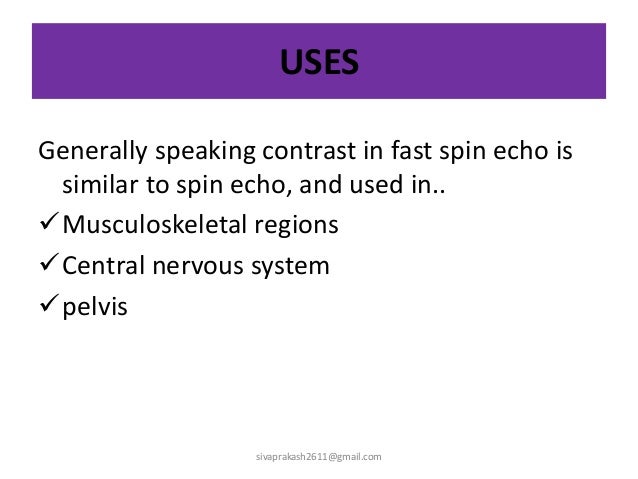

Tissues regain M z at different longitudinal (T1) relaxation rates determined by their T1 relaxation times. The signal equation for a repeated spin echo sequence as a function of the repetition time, TR, and the echo time (TE) defined as the time between the 90 o pulse and the maximum amplitude in the echo is. The preparatory pulse inverts longitudinal magnetization (M z ), namely, it flips M z to its negative value, -M z. A timing diagram shows the relative positions of the two radio frequency pulses and the signal. (e) Temporal evolution of the average resonator photon number | ⟨ a ⟩ | 2 / N (upper), the average spin expectation values S av x, y = ∑ j ⟨ σ j x, y ⟩ / N (middle), and S av z = ∑ j ⟨ σ j z ⟩ / N (lower) calculated from the semiclassical Maxwell-Bloch equations. Basically, an inversion recovery (IR) pulse sequence is a spin echo pulse sequence preceded by a 180 RF pulse. (d) Microwave signal intensity | S 21 | 2 for fixed magnetic field for the hyperfine transition (green) and P 2 line (blue). (c) Microwave signal intensity | S 21 | 2 displaying several echo signals after the conventional first echo for the strongly coupled hyperfine lines, while only one echo is visible for weakly coupled P 2 dimers. (b) Integrated echo area A echo = ∫ echo | S 21 | d t as a function of magnetic field, showing the two hyperfine transitions as well as the P 2 dimer peak. The Gradient Echo Multi Slice (GEMS) sequence uses a variable, operator dependent, flip angle instead of a 90 degree. Dashed lines indicate the subpanels in (c). In the FSE/TSE pulse sequence diagram above you will note that each positive phase encode gradient is paired with a negative gradient immediately after the echo. (a) Echo signal as a function of acquisition time and magnetic field of the first echo. Two additional spectroscopic features are observed, which are attributed to dangling bond defects P b 0 / P b 1 and P 2 dimers, respectively (see text). (f) Extracted linewidth κ / 2 π (HWHM) as a function of magnetic field. Two avoided crossings are visible, indicating strong coupling between the hyperfine-split transitions of the phosphorus donors and the resonator. (e) Normalized transmission | S 21 | 2 as a function of frequency and magnetic field. (d) Schematic of the 20 μ m thin Si 28 : P sample mounted on top of the LER, also indicating the in-plane magnetic field direction B 0. (b) Circuit diagram and (c) microscope image of the LER. In (5)–(7) only these two spin packets are shown for better visibility. As before, the great wyrms presence stirs the dormant power of the Echo. For the subsequent pulse train observed in the strong coupling limit, the spin packets indicated by blue and red arrows are crucial, which lie in opposite S y directions when the first π pulse arrives at (3) (see text). This is not an exact sequence in which abilities should be cast Il nest pas. A π / 2 pulse is applied between (1) and (2) and an imperfect π pulse between (3) and (4), leading to the first (conventional) Hahn echo between (5) and (6). (a) Schematic of the Hahn echo sequence and the associated states in the Bloch sphere (exterior black arrows indicate the ensuing spin dynamics).


 0 kommentar(er)
0 kommentar(er)
